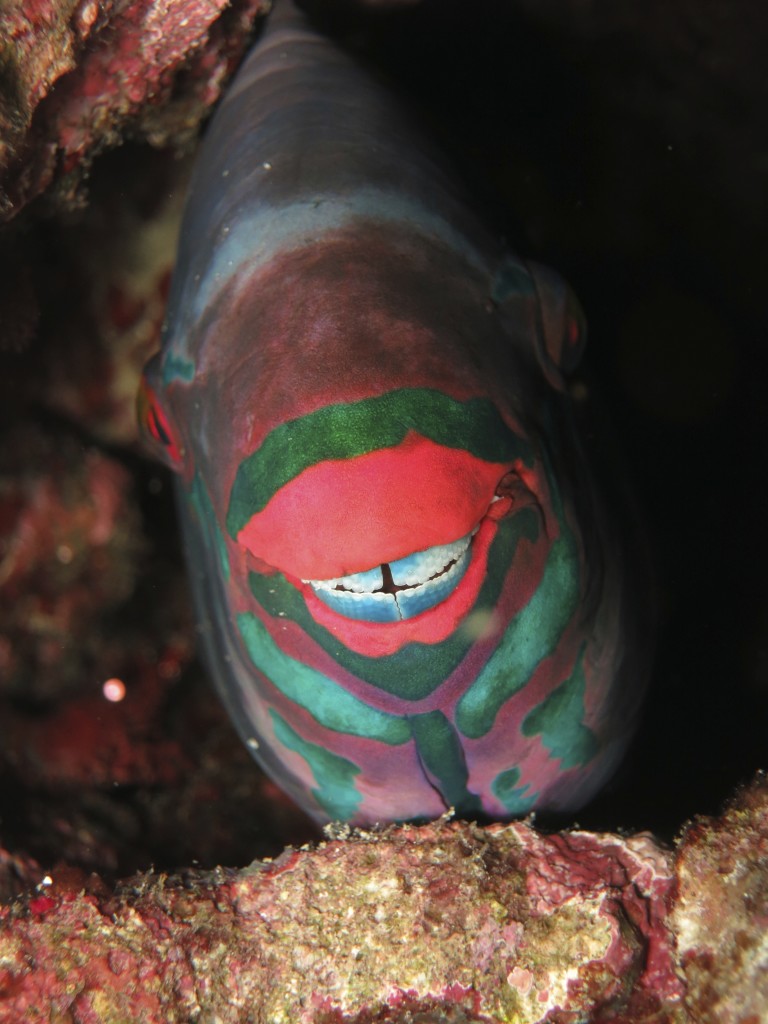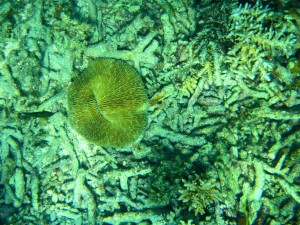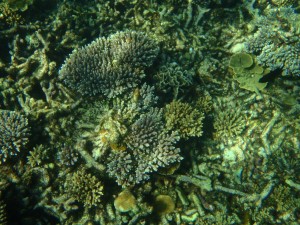Besides studying turtle conservation at Mak Kepit beach on Pulau Redang (Redang Island), we also had the opportunity to snorkel right off of the beach. There are many different kinds of corals on the reef, especially Acropora sp. (hard branching coral) and mushroom corals (Fungia sp.). For our assignment, we needed to perform two different types of coral reef surveys: a line transect and a quadrant. The line transect assesses what the ocean floor is composed of (rock, live hard coral, dead coral, sand, rubble, or other) and the quadrant measures how much of a square meter is covered by live hard coral. We had to lay down three 10-meter line transects at 1.5 meters deep and another three line transects at 2.0 meters deep. The tape measure we used would naturally sink to the bottom, but to make sure the tape stayed in place, we had to secure it every few meters with rocks or dead coral. We also made three 1×1 meter boxes at 1.5 meters and 2.0 meters deep for our quadrant survey, and were able to record all our data using a plastic clipboard and a pencil. Usually these surveys are conducted using Scuba gear, and our teacher was Scuba diving to observe our work and take pictures of us. Mastering diving with a snorkel and fins was challenging, but fun once we got the hang of it!
Besides the academic portion of the field trip, we were able to go snorkeling any time the beach was open, which was from around 8 am to around 6:30 pm (the turtles lay their eggs at night, so we couldn’t be out on the beach at that time). Since it’s so hot here, it was great to be able to cool off in the South China Sea and see some cool critters! The other kinds of hard corals we saw were slipper coral and brain coral, as well as a few anemones (with clownfish living in them!!) and Christmas tree worms (when they feel threatened, they disappear for a while, and re-open in a spiral) on the rocks. Other animals we saw were giant clams, squirrel fish (they have huge eyes and live underneath table coral and rocks), butterfly fish that swim in pairs, moon wrasse, bi-colour parrotfish, groupers, needlefish, moray eels, and sea slugs. On one snorkeling adventure in the afternoon, some people swam north of the beach to a cliff area where the reef drops off a lot faster, and saw a black-tip reef shark that was around 6 feet long!! Don’t worry, they’re vegetarian. It was awesome to observe such a fragile and endangered environment.


